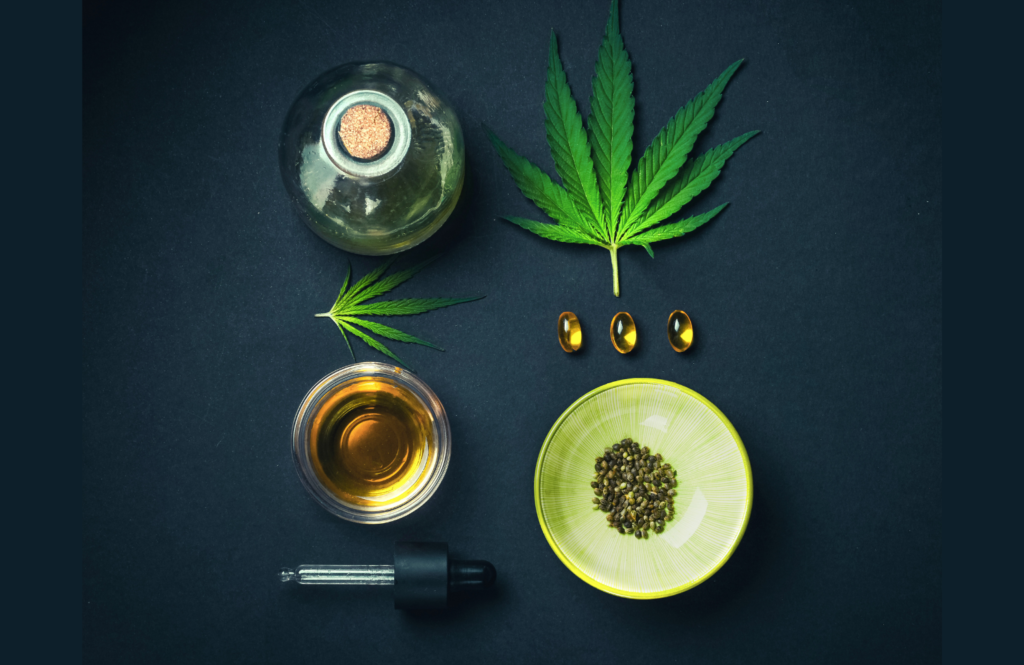What you eat can shape how cannabis feels—its strength, duration, and effectiveness.
While most associate food with the munchies, your diet plays a deeper role in how cannabinoids are absorbed and processed.
From fats that enhance THC and CBD uptake to nutrients that regulate inflammation and support the endocannabinoid system, your meals may be the key to more consistent, therapeutic results.
The Endocannabinoid System and Diet: A Two-Way Street
Your body has a built-in system that helps regulate stress, sleep, appetite, inflammation, and pain. It’s called the endocannabinoid system (ECS), and it works a lot like a dimmer switch for your body’s balance.
Why Fats Matter to Your ECS
The ECS is made from fat. The same dietary fats you eat get turned into endocannabinoids—your body’s natural versions of THC and CBD.
- Omega-6 fats (found in seed oils, fried foods, and processed snacks) are converted into compounds like anandamide and 2-AG, which are part of the ECS.
- But too much omega-6 can overstimulate the system, keeping your body in a constant state of metabolic “high alert.”
- Omega-3s (from fatty fish, flax, chia, walnuts) do the opposite: they help regulate ECS tone and reduce chronic inflammation.
The Problem With the Modern Diet
Most people today consume way more omega-6 than omega-3. We’re talking ratios of 20:1 when our bodies thrive closer to 3:1 or 4:1.
Too much omega-6 may lead to:
- Heightened inflammation
- ECS dysregulation
- Lower stress resilience
- Blunted or erratic cannabis responses
Meanwhile, omega-3s:
- Improve how your ECS responds to cannabinoids
- May increase CB₁ receptor expression
- Support cognitive function and emotional regulation
What This Means for Cannabis Users
If your ECS is already overwhelmed from diet-driven inflammation, adding cannabis to the mix might feel unpredictable—some days too strong, others not enough.
But when your nutrition supports the ECS, cannabis tends to “land” better: smoother onset, steadier mood, and more reliable symptom relief.
Maximizing Cannabis Absorption Through Healthy Fats
Ever wonder why some edibles hit hard—and others barely move the needle? The answer often comes down to what you ate before taking them.
Cannabinoids like THC and CBD are fat-soluble, meaning they need dietary fat to be absorbed properly in your digestive tract. Without fat, most of that expensive edible just gets wasted.
How Fat Supercharges Cannabis
Here’s what the research shows:
- In a clinical trial, taking CBD with a high-fat meal boosted absorption by up to 17x compared to taking it on an empty stomach.
- That means you can get more powerful, longer-lasting effects from the same dose—just by eating smart.
Best Fats to Pair with Cannabis
Not all fats are created equal. Focus on healthy, whole-food fats to support absorption and avoid triggering inflammation.
Here are some good options:
- Avocados or avocado oil
- Extra virgin olive oil
- Nuts and seeds (especially walnuts, chia, flax)
- Nut butters
- Fatty fish like salmon
- Coconut oil (great for edibles)
Avoid: Trans fats, deep-fried snacks, or heavy processed oils—they may carry cannabinoids but also add unnecessary stress to your system.
Timing Matters Too
- For edibles or capsules: Take them with or just after a meal that includes some healthy fat.
- For tinctures: Place under the tongue, but still follow up with a light-fat snack or meal to catch any cannabinoids swallowed.
- For homemade infusions, use fat-based carriers such as coconut oil, ghee, or full-fat cream.
Quick Tips: Eat Smart, Dose Smarter
| Cannabis Product | Fat Pairing Tip |
|---|---|
| THC/CBD Capsules | Take with avocado toast, nut butter smoothie, or trail mix |
| Gummies or Edibles | Eat right after a healthy-fat meal for a better onset |
| Tinctures | Swish under tongue, then eat something fatty to maximize oral + gut absorption |
Nutrients and Compounds That Enhance Cannabis Effects
Cannabis doesn’t work in isolation—it interacts with the rest of your body chemistry, including the nutrients and plant compounds you get from food. Some of these compounds support, amplify, or balance the effects of cannabinoids like THC and CBD.
Think of these as natural teammates—when you eat the right foods, you’re not just nourishing yourself, you’re helping cannabis do its job more smoothly.
1. Flavonoids: More Than Just Antioxidants
Flavonoids are plant compounds found in deeply colored fruits, vegetables, and herbs. While they’re best known for their antioxidant effects, some flavonoids may also offer pain relief, anti-inflammatory action, and even mood support, independently of cannabinoids.
How They Help:
- May reduce inflammation via COX inhibition (like CBD)
- Can interact with opioid and serotonin receptors
- Offer protective effects on the brain and nerve tissue
Food Sources:
- Berries (blueberries, raspberries)
- Dark chocolate and raw cacao
- Kale, spinach, and other dark leafy greens
- Citrus fruits (especially the white pith)
- Green tea and turmeric
2. Terpenes in Food: The Mango–Myrcene Myth and More
You’ve probably heard someone say,
“Eat a mango before you smoke—it’ll hit harder.”
That theory comes from myrcene, a terpene found in both mangoes and some cannabis strains.
So, does it work?
- Myrcene is believed to enhance THC’s sedative effects by helping it cross the blood-brain barrier faster.
- However, research is still limited and mostly anecdotal.
- Still, the concept of terpene synergy—where compounds in cannabis and food work together—is very real.
Other Terpene-Rich Foods to Try:
- Lemongrass and thyme – rich in linalool (calming)
- Basil and rosemary – high in pinene (focus, alertness)
- Black pepper – contains beta-caryophyllene, which directly interacts with CB₂ receptors and may calm anxiety
3. Other Synergistic Nutrients
| Nutrient/Compound | Why It Matters | Where to Get It |
|---|---|---|
| Omega-3s | Helps regulate ECS tone; enhances cannabinoid effects | Fatty fish, flax, chia, walnuts |
| Magnesium | Supports mood, nerve function, and may ease anxiety | Pumpkin seeds, almonds, leafy greens |
| Polyphenols | Reduce oxidative stress; support gut health | Berries, olive oil, dark chocolate |
How Cannabis and Diet Shape Your Gut Microbiome
The gut isn’t just where digestion happens — it’s where immunity, inflammation, mood, and metabolism are largely managed. And guess what? The endocannabinoid system (ECS) plays a direct role in regulating all of it.
So when you combine cannabinoids with a gut-friendly diet, you’re essentially feeding both your body and your ECS at the same time.
Here’s how they all link together:
- Your ECS regulates gut permeability (aka “leaky gut”), inflammation, and gut motility.
- Cannabinoids like CBD and THC can help shift the balance of gut bacteria, encouraging more diversity and more short-chain fatty acid (SCFA) production.
- A healthier microbiome, in turn, supports ECS function, creating a positive feedback loop.
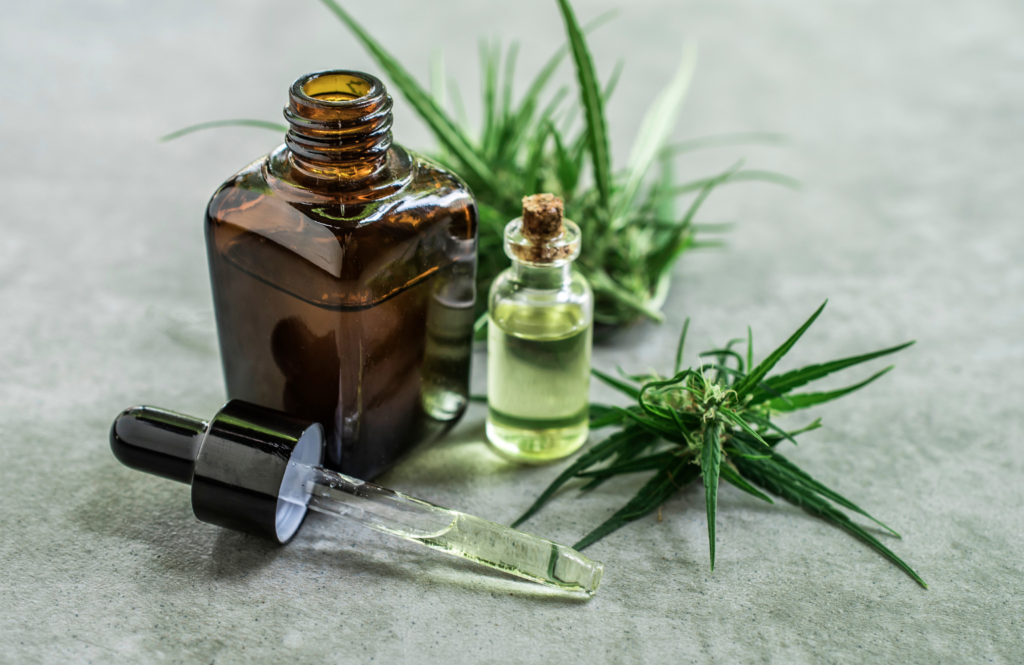
| Category | Foods to Include | Why It Helps |
|---|---|---|
| Prebiotic fiber | Garlic, onions, leeks, asparagus, oats | Feed good bacteria that produce SCFAs |
| Fermented foods | Kimchi, sauerkraut, kefir, plain yogurt | Introduces beneficial bacteria |
| Polyphenol-rich plants | Berries, green tea, cacao, olive oil | Anti-inflammatory + microbiome support |
| Resistant starch | Cooked/cooled rice or potatoes, green bananas | Feed butyrate-producing microbes |
- If you’re prone to digestive issues, CBD may help soothe inflammation, but always start with a low dose and track how your gut responds.
- Combine cannabis edibles with a high-fiber meal (e.g., lentil salad + olive oil) to support both ECS absorption and microbiome health.
- Avoid pairing cannabis with sugar-heavy or ultra-processed foods, which feed inflammatory bacteria and blunt the benefits.
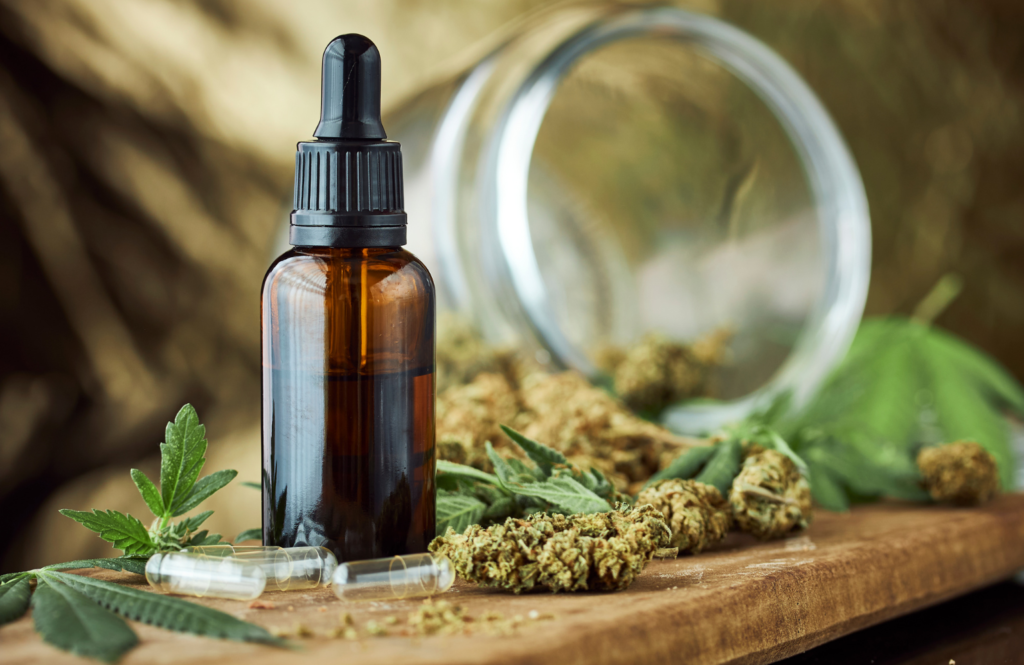
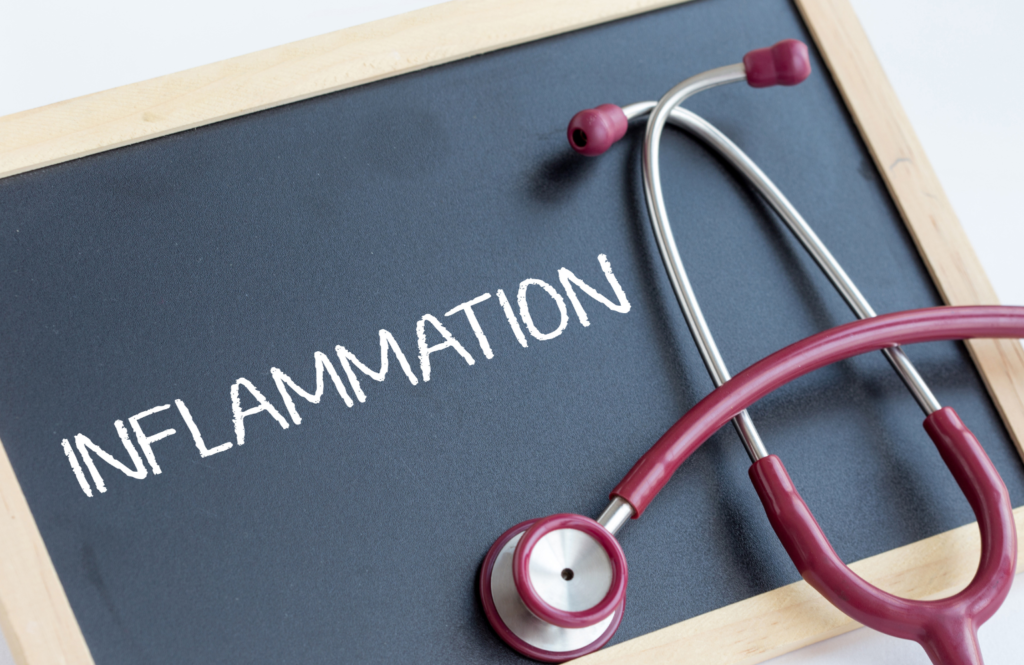
Using Food to Manage Inflammation and Munchies
Cannabis has incredible potential to reduce inflammation and improve how your body responds to stress. But if your diet is working against it—loaded with processed snacks and sugar—those benefits can get muted or even reversed.
And let’s be honest: the munchies are real.
The good news? You don’t have to choose between feeling good and eating smart. With the right food strategies, you can keep inflammation low, control cravings, and still enjoy the therapeutic effects of cannabis.
How Diet and Cannabis Work Together Against Inflammation
Both cannabis and certain nutrients help calm the body’s inflammatory signals. Together, they can be even more effective.
Anti-inflammatory diet wins:
- Cuts out ultra-processed, sugar-heavy foods
- Focuses on real ingredients like vegetables, legumes, whole grains, and omega-3-rich fats
- Reduces levels of pro-inflammatory markers like CRP and IL-6
Cannabis adds:
- CBD and THC help reduce neuroinflammation, calm immune overactivation, and regulate COX-2 enzymes
- May help modulate autoimmune flare-ups and chronic pain when paired with the right diet
The Munchies: Why They Happen, and How to Handle Them
THC interacts with the brain’s hunger-regulating centers (especially the hypothalamus), boosting ghrelin—your hunger hormone—and making food seem tastier.
That’s great for medical users needing to gain weight or stimulate appetite. But if you’re using cannabis casually or for pain management, overeating junk food can undo a lot of its health potential.
Smart ways to manage the munchies:
- Pre-eat before your session: something high in fiber + protein to stay full longer
- Prep snacks ahead so you don’t grab whatever’s closest
- Stay hydrated—thirst often disguises itself as hunger
- Use structure: set a limit or schedule snacks mindfully instead of zoning out with the bag
Munchie-Friendly, Nutrient-Dense Snack Ideas
| Snack Combo | Why It Works |
|---|---|
| Apple slices + almond butter | Fiber, healthy fat, and natural sweetness without blood sugar crash |
| Hummus + veggies or seed crackers | Protein + fiber keeps you full and grounded |
| Greek yogurt + berries | Satisfies sweet cravings while supporting your gut |
| Popcorn (air-popped) + olive oil drizzle | Crunchy, satisfying, low-calorie, anti-inflammatory fats |
| Dark chocolate (70%+) + walnuts | Boosts mood and adds omega-3s |
Weight and Cannabis: It’s Not What You Think
Despite the stereotype, regular cannabis users—especially those who pair it with active lifestyles and clean diets—are often leaner, with:
- Lower BMI
- Better insulin sensitivity
- Reduced risk for type 2 diabetes
Practical Tips for Combining Diet and Cannabis
Daily Checklist for Cannabis-Supportive Eating
| Goal | What to Do |
|---|---|
| Boost absorption | Take edibles/tinctures with 10–15g of healthy fat (avocado, olive oil, nuts) |
| Balance the ECS | Get omega-3s daily: fatty fish, flaxseed, chia, walnuts |
| Protect your gut | Eat 25–30g of fiber from plants, whole grains, and legumes |
| Calm inflammation | Ditch processed oils & sugar; use herbs/spices like turmeric, ginger |
| Tame the munchies | Prep balanced snacks with protein + fiber ahead of time |
| Stay hydrated | Aim for 2–3L water/day to support ECS and digestion |
| Support liver detox | Load up on cruciferous veggies (broccoli, cabbage, kale) & lemon water |
| Time it right | Plan cannabis use around meals—avoid fasting if using orally |
Best Food Pairings for Different Times of Day
| Time of Day | Ideal Food + Cannabis Combo |
|---|---|
| Morning microdose | Scrambled eggs + avocado toast + CBD tincture |
| Midday relief | Lentil or grain bowl + olive oil dressing + 1:1 edible |
| Evening wind-down | Salmon, sautéed greens, sweet potato + low-THC vape or gummy |
| Post-workout | Smoothie with plant protein, nut butter, berries + topical or oral CBD |
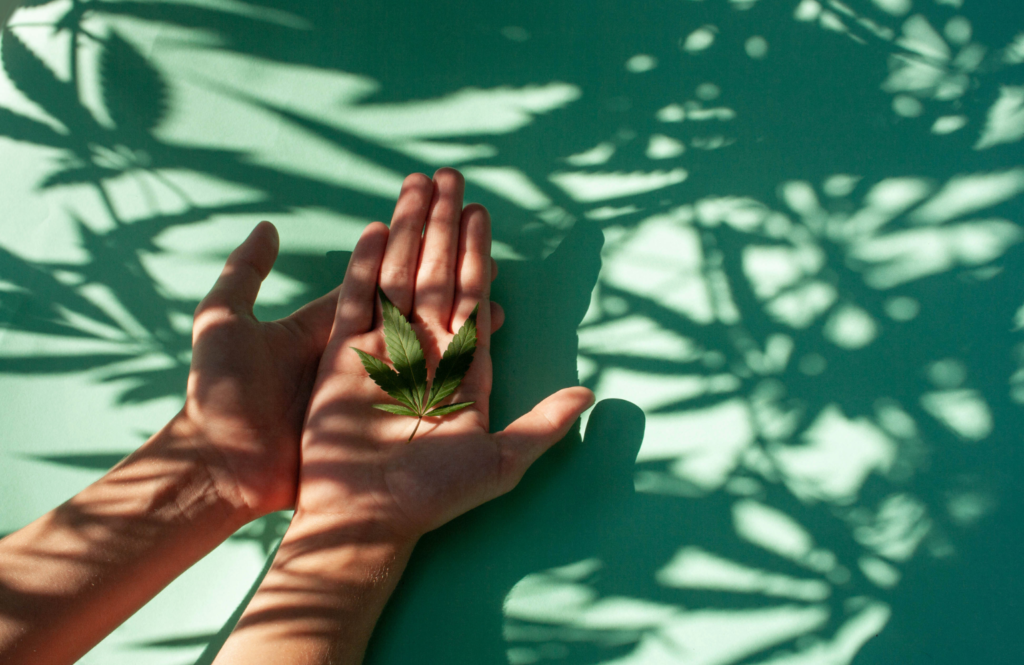
Simple Nutrition Wins for Cannabis Users
- Batch cook omega-3-rich meals (like baked salmon or flaxseed muffins) to have them ready throughout the week
- Use flavorful herbs and spices (rosemary, thyme, ginger, cumin) to reduce the need for sugary or salty snacks
- Keep a stash of “smart munchies” (like trail mix, roasted chickpeas, or homemade protein balls) nearby
Risks and Safety Considerations
Cannabis and nutrition can be a powerful combination for health. But that doesn’t mean more is always better. Just like certain foods interact with medications, cannabis can too — especially when you’re using concentrated products like oils, capsules, or tinctures.
Being informed about drug interactions, overuse, and personal tolerance is key to getting all the benefits without unwanted side effects.
Watch for Drug–Cannabis Interactions
Many prescription medications are metabolized in the liver through enzymes in the CYP450 pathway — the same system that processes cannabinoids.
If you’re taking medications like:
- Blood thinners (e.g., warfarin)
- Antidepressants or SSRIs
- Anti-seizure drugs
- Immunosuppressants
- Benzodiazepines or sedatives
CBD or THC may slow down or intensify the effects of these drugs. This is similar to the effect of grapefruit juice, which also inhibits CYP enzymes.
Know Your Body: Tolerance and Sensitivity Vary
Everyone’s ECS is different. A dose that feels calming for one person could feel overwhelming for another, especially if your diet, hydration, or hormone levels are out of balance.
Red flags to watch for:
- Grogginess that lingers into the next day
- Racing heart or anxiety after dosing
- Nausea, dizziness, or disorientation
- Increased sugar or junk food cravings over time
If this happens:
- Lower your dose, especially with THC
- Check your diet — too much sugar or omega-6s can amplify side effects
- Switch ratios (e.g., go from 1:1 to CBD-dominant products)
When to Talk to a Clinician
You should consult a qualified healthcare provider if:
- You’re using cannabis daily or for a chronic health conditio
- You’re pregnant, nursing, or trying to conceive
- You’re combining cannabis with prescription meds
- You notice any new digestive, cognitive, or emotional symptoms
- You’re unsure which cannabinoid profile (THC, CBD, CBG, etc.) is right for your goals
Aligning Your Body with What It Needs
Food and cannabis can either compete or cooperate inside your body. When you choose meals that nourish your endocannabinoid system—rich in healthy fats, fiber, and plant compounds—cannabis tends to work more smoothly, more consistently, and with fewer side effects.
This isn’t about strict rules or perfection. It’s about paying attention. A well-timed edible after a balanced meal, a mindful dose paired with hydration and rest—these small choices can add up to better mood, deeper sleep, steadier pain relief, and stronger overall wellness.
When you treat diet and cannabis as partners instead of separate tools, you give your body what it needs to heal, respond, and thrive.
Food and flowers. Together, they speak your body’s language.

